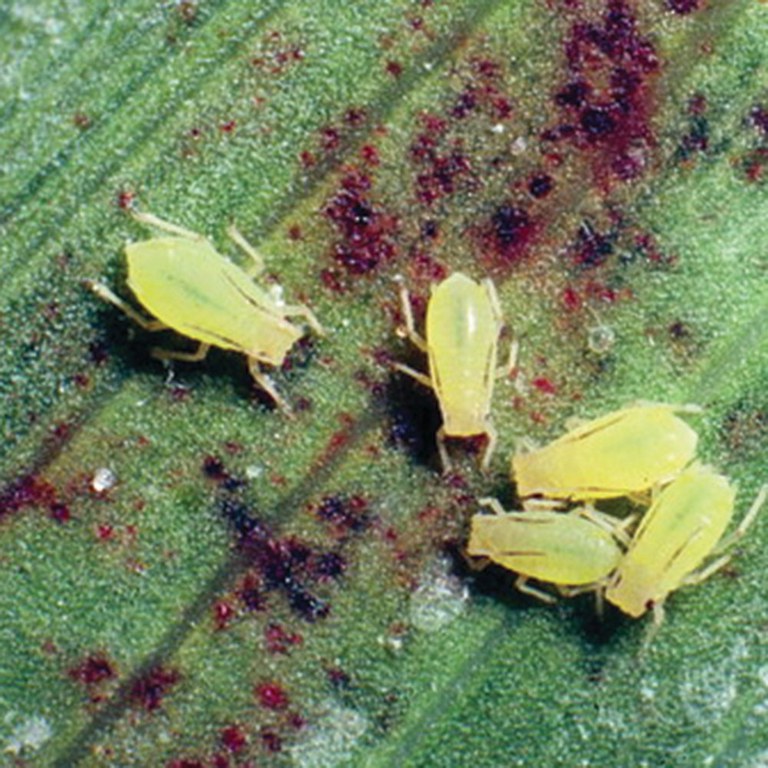Posted: October 4, 2019
Insect-deterring sorghum compounds may be made into eco-friendly pesticides.
Compounds produced by sorghum plants to defend against insect feeding could be isolated, synthesized, and used as a targeted, nontoxic insect deterrent, according to researchers who studied plant-insect interactions that included field, greenhouse, and laboratory components.
The researchers examined the role of sorghum chemicals called flavonoids--specifically 3-deoxyflavonoid and 3-deoxyanthocyanidins--in providing resistance against the corn leaf aphid, a tiny blue-green insect that sucks sap from plants. To defend against pests like the aphids, sorghum has evolved defenses that include biosynthesis of secondary metabolites, including flavonoids to poison the pests.
A previous Penn State study showed that in sorghum, accumulation of these flavonoids is regulated by a gene called yellow seed1 that controls responses to stresses such as fungal pathogens, noted Surinder Chopra, professor of maize genetics.
In the current study, researchers grew two nearly identical lines of sorghum--one with a functional y1 gene that produced flavonoids and the other a mutant called null y1, which did not possess the functional yellow seed1 gene responsible for producing the flavonoids.
When they compared the two lines of plants, the team found that a significantly higher number of adult corn leaf aphids colonized null y1 plants compared to the plants with the functional y1 gene that produced flavonoids. The aphids actively fed on the null y1 plants, some of which showed signs of stress with yellowed leaves. The functional sorghum plants that produced the flavonoids had much lower aphid numbers and showed no ill effects from aphid feeding.
Greenhouse experiments with similar potted sorghum plants demonstrated that the aphids clearly preferred to feed and reproduce on null y1 plants, and the adults produced many more nymphs.
In a companion laboratory experiment, researchers fed two groups of adult aphids diets of sorghum leaf tissues, but to one they added an extract containing the flavonoids. After a few days, most of the aphids that fed on the flavonoid-enriched leaf tissue died and reproduction was curtailed; none of those aphids had nymphs before they succumbed.
Perhaps surprisingly, Chopra explained, the flavonoids are not present in the phloem--vascular tissue in plants that conducts the sugars aphids seek--but are in the epidermal cells that form the outermost layer of defense. When aphids repeatedly probe and puncture the epidermal cells with their stylets, or beaks, they take up the flavonoids that lead to their demise.
The findings, published in the Journal of Chemical Ecology, indicate that flavonoids can potentially be deployed as potent insect deterrents to protect crops, Chopra suggested.
"Sorghum plants have evolved to precisely emit compounds offering defenses against harmful predatory insects that threaten them, and yet these chemicals in their defenses don't hurt beneficial insects," said Chopra. "If we could develop nontoxic insecticides, it would be a game changer--given that the toxicity of synthetic pesticides is of great concern, and they are considered to be dangerous to human health."
--Jeff Mulhollem
Features
Breaking the Silence on Farm Stress
Farming has always been a demanding profession, but today's farmers face unprecedented pressures that can severely impact their mental health.
Biting Back
Research Targets Vector-Borne Diseases to Save Lives
Leading Forward
Ott brings deep connection to role of dean.



